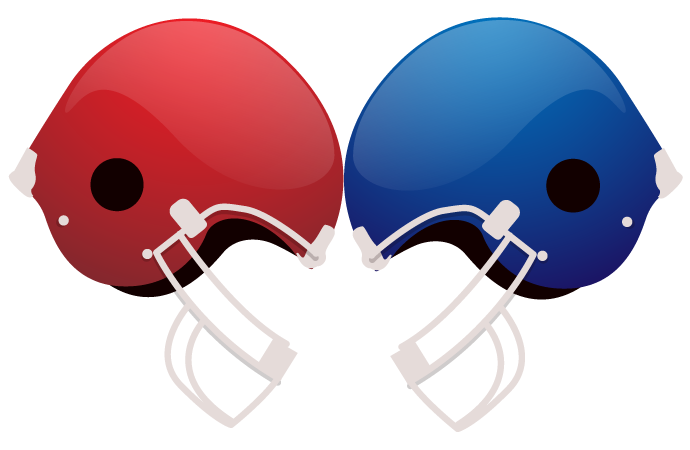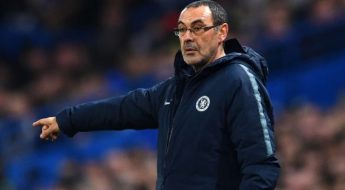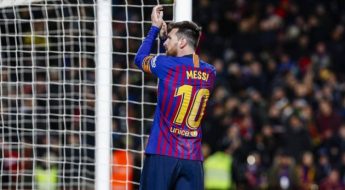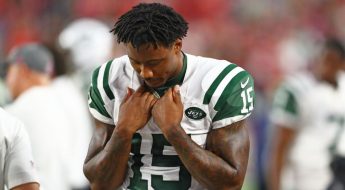Top projected free agents for 2018

You know how it goes: The best NFL players almost never make it to free agency. It’s rare for even an average quarterback to get there.
We could see exceptions to both rules in the spring of 2018, based on a relatively monster list of players whose contracts are set to expire. Some of them could sign contract extensions during the season or before the market opens with their current teams. Others might receive the franchise tag, and a few could retire.
But a fella can dream, can’t he? For the moment, at least, let’s consider the futures of 20 pending free agents, ranked roughly in order of intrigue:

Cousins is playing under the franchise tag for the second consecutive season. There is unlikely to be a third, given the enormous cost of nearly $34 million in cash and cap space. Conventional wisdom suggests that Cousins, having come this far, will test free agency to find out his true market. That deal, from the Redskins or someone else, should break NFL records.

After turning down a long-term offer this summer, Bell is playing on a $12.1 million franchise tag. It would cost the Steelers around $15 million to franchise him again in 2018. Would they really pay him so much? That figure is nearly twice the highest average salary for a running back other than Bell (Devonta Freeman, $8.25 million). A word to the wise: Free agency is often a disappointment for veteran running backs. By next spring, Bell will have five NFL seasons’ worth of wear and tear on his body.

The Patriots deflected multiple trade offers last spring and held on to Garoppolo, whose preseason and brief regular-season outings suggest he is a genuine heir apparent to Tom Brady. But there is no indication that Brady plans to retire anytime soon. He will turn 41 next summer. After four years as a backup, Garoppolo will want to play somewhere in 2018. The Patriots could use the franchise tag, even though it would cost about $22 million, to buy one more year of insurance.

Brees remains the best thing about a franchise that is 23-29 the past four seasons. It’s hard to imagine the Saints moving on without him, absent his own decision to retire. But they’ll still have to pay big for a quarterback who will be 39 when the 2018 season starts. Brees’ current deal averages $24.25 million per season. Would he settle for less?

As he showed in Week 1, Bradford can be quite effective when healthy and surrounded by a balanced set of weapons. But his knees continue to hold back sustained success, and the Week 5 debacle at Soldier Field made clear he is still injured. Unless he makes a quicker-than-expected recovery and finishes the season strong, he’ll enter the market as damaged goods. On the plus side, he will have earned nearly $115 million by the time he turns 30.

Graham has never matched the elite production he gave the Saints, an unsurprising development considering the difference in schemes. After 51 touchdown receptions from 2010-14 for the Saints, he has managed nine in 2¼ seasons with the Seahawks. He’ll turn 31 in November and would need to target a pass-first offense in free agency in order to maximize his skills.

The Rams have used the franchise tag on Johnson in consecutive years, guaranteeing him $30.7 million for 2016-17. Many consider that a generous sum for a cornerback who has never made a Pro Bowl or All-Pro team. He opened this season with a pick-six in the Rams’ blowout of the Indianapolis Colts, but you would figure his time under the tag will come to an end. He’ll be 28 by the start of free agency, young enough to generate strong value from a cornerback-deficient team.

The subject of trade rumors this past offseason, Butler notably did not receive a contract extension despite developing into the Patriots’ most reliable cover man in recent seasons. The Patriots’ decision to sign free agent Stephon Gilmore instead in the spring suggested they might have decided to let Butler depart via free agency. Whatever his imperfections, the dearth of competent and available corners will work in his favor.

Bridgewater’s future is as murky as that of any player on this list. He is 13 months past a catastrophic knee injury that threatened his career and one week away from being eligible to resume practicing. Will he be ready? No one knows for sure. If he is ready, will Bradford keep him on the bench? Bridgewater’s contract is set to expire after this season, but the Vikings could freeze — or “toll” — his contract if he does not play this season, making him ineligible for free agency. Stay tuned.

The Lions picked up their fifth-year option on Ansah but haven’t signed him to a long-term deal. At this point, Ansah would be smart to hit the market, where pass-rushers are almost always rewarded. The Lions could make a late play to re-sign him. But now that quarterback Matthew Stafford’s contract extension is complete, they also could use their 2018 franchise tag on Ansah. After a disappointing two-sack performance in 2016, Ansah’s four sacks this season put him closer to the pace that pushed him to 14.5 sacks in 2015.

It’s fair to wonder if Fitzgerald is playing his final season. His contract expires in the spring, and he will turn 35 this summer. His early-season production — he’s on pace for a third consecutive 1,000-yard season — suggests that he could be in play for 2018 if he wants to be. But he already is one of the most well-compensated receivers — and, really, non-quarterbacks — in NFL history. Through a series of unique cap circumstances, Fitzgerald’s contracts will have paid him more than $150 million by the end of this season, according to Spotrac tracking.

Pryor bet on himself last spring, turning down a multiyear offer from the Browns to sign a one-year deal worth $6 million with the Redskins. With a far more accomplished quarterback in Cousins, the thinking went, Pryor could dramatically raise his value for 2018. That effort is off to a slow start, however, with 13 receptions for 186 yards and one touchdown in four games.

Like Pryor, Jeffery took a one-year deal to reset his market value for 2018. He’s earning $9.5 million from the Eagles with a chance to cash in next spring. But as with Pryor, the numbers have come slowly for Jeffery. He has 20 receptions for 246 yards and two scores in the Eagles’ first five games.


The NFL’s Defensive Rookie of the Year in 2013 and a Pro Bowl selection in 2014, Richardson played his way off the New York Jets — and into a much better situation from all angles. Playing amid the Seahawks’ cast of Pro Bowlers should bring out the best in him and give him an optimal chance to enhance his value heading into free agency.

Although he doesn’t get as much national coverage as some of the NFL’s other elite receivers, Landry has caught more passes since the start of the 2014 season (318) than all but three pass-catchers. Although it’s possible that the Dolphins could sign him to an extension, he might be better advised to wait until he knows the team’s long-term quarterback plan.

Nate Solder, LT, New England Patriots
With the exception of an injury-shortened 2015 season, Solder has been the Patriots’ left tackle for seven years. Although no one would suggest that he is among the league’s elite players at the position, the desperate dearth of competent NFL linemen suggests he would enjoy a good market for his services. But we will see if Solder becomes the latest Patriots veteran to accept a discount to remain with the franchise.

An imposing and versatile target when healthy, Eifert is once again struggling to get on the field. A back injury has limited him to four receptions in two games this season after he played in only eight games in 2016 and one in 2014. But his 13-touchdown performance in 15 games during the 2015 season will be alluring for teams seeking playmakers.

Frank Gore, RB, Indianapolis Colts
Teams won’t often see value in a running back who is approaching his 35th birthday, and for all we know, Gore will retire after this season. But he has proved remarkably durable, having not missed a game in seven seasons. His production has waned — he last averaged 4.0 or more yards per carry in 2014 — but he is too special to rule out as a free-agent possibility in 2018.

Davis has fallen off a bit from the Pro Bowl level he demonstrated in 2014 and 2015, and a recent youth movement in the Colts’ defensive backfield suggests he could be looking for a new team this spring. He turns 30 in May but will have a better résumé than most of the corners available and could help a coverage-deficient team.






